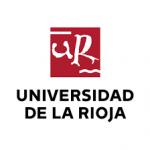Detection and characterization of extended-spectrum beta-lactamases in Salmonella enterica strains of healthy food animals in Spain
The Journal of Antimicrobial Chemotherapy publica este artículo de investigación
1 de octubre de 2006
OBJECTIVES: To carry out the characterization of the genes encoding extended-spectrum beta-lactamases (ESBLs) and their genetic environments in four expanded-spectrum cephalosporin-resistant Salmonella enterica isolates (serovars: two Virchow, one Enteritidis, one Rissen) recovered during the monitoring programmes performed in Spain by the VAV Network from faecal samples of pigs, poultry and laying hens at the slaughterhouse level. METHODS: The presence and characterization of ESBL genes as well as their genetic environments in the four S. enterica isolates were investigated by PCR and sequencing. The presence of other resistance genes was also analysed by PCR and sequencing. RESULTS: Three avian S. enterica isolates (two Virchow and one Enteritidis) harboured the bla(CTX-M-9) gene combined with bla(TEM-1b). The bla(CTX-M-9) gene was included in these three isolates in a class 1 integron with the following 5`-->3` structure: integron 1 variable region (dfrA16-aadA2 gene cassettes)-qacEDelta1-sul1-orf513-bla(CTX-M-9)-orf3-like-orf1005. The sul2 gene was also detected in these three bla(CTX-M-9)-containing isolates and tet(A) in one of them. The two serovar Virchow isolates showed an indistinguishable PFGE pattern, although they were recovered from different animal species (broiler and laying hen). A porcine ESBL-positive isolate (serovar Rissen) harboured the bla(SHV-12) gene combined with bla(TEM-1b). This bla(SHV-12)-containing isolate also harboured the tet(A), aadA and sul1 genes. CONCLUSIONS: The emergence of ESBL-producing S. enterica isolates among food animals is described for the first time in Spain, with those of the CTX-M group being the predominant ESBLs detected
Riano I., Moreno MA., Teshager T., Dominguez L. y Torres C.
 | Departamento de Sanidad Animal. Facultad de Veterinaria. Universidad Complutense (UCM). |
 | Servicio de Zoonosis de Transmisión Alimentaria y Resistencia a Antimicrobianos (ZTA). Centro de Vigilancia Sanitaria Veterinaria (VISAVET). Universidad Complutense (UCM). |
 | Área de Bioquímica y Biología Molecular. Universidad de La Rioja (UR). |
